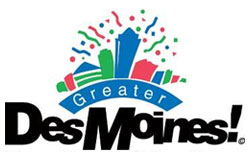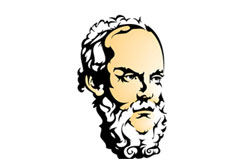Just look at Quester\’s home page and you see our company driver… Innovation to Insight. It is what brings our team to work every day. In this look inside Quester, we take an introspective deep-dive into innovation and insight, leading up to this October\’s Corporate Researchers Conference where we are proud to sponsor the keynote presentation of innovation rockstar Tom Wujec. He will talk to why innovation matters, why it is a vital engine of economic growth (especially today) and how to foster innovation in your company\’s culture.
For those who have not read Tom\’s books or heard his TED talks, he is a student of collaborative creativity, of wicked problem-solving and the impact of emerging technologies on how we design and make things. What I find most interesting about Tom\’s work is his study of how we share and absorb information. His facilitation practice incorporates visualization, rapid prototyping and business mapping. He regularly produces massive wall drawings, sometimes hundreds of feet long that graphically capture several days of presenters\’ content, providing visual reference for participants to develop comprehensive business strategies.
Tom\’s talk intersects beautifully with what we at Quester are bringing as innovation to the corporate research industry. That is because we believe in creating deep conversations and asking what information needs to be obtained in whatever way it makes sense. Open ended responses are not the end of the discussion but just the beginning.
Innovation does come from humans asking and answering questions. Historically some have disagreed. Take for example Jonathan Huebner, a physicist at the Pentagon\’s Naval Air Warfare Center. He has argued that on the basis of both U.S. patents and world technological breakthroughs, per capita, that the rate of human technological innovation peaked in 1873 and has been slowing ever since. He has commented to New Scientist magazine that he believes we will reach a rate of innovation in 2024 equivalent to that of the Dark Ages. Won\’t people still be asking questions nine years from now?
When looking at innovation in business, it was economist and professor Joseph Schumpeter who contributed greatly to the study of innovation economics. He argued that industries must incessantly revolutionize the economic structure from within, that is innovate with better or more effective processes and products, as well as market distribution. In essence, it could be said that Schumpeter supported corporate research by encouraging entrepreneurs to continuously look for better ways to satisfy their consumer base with improved quality, durability, service, and price. These have come to fruition in innovation with advanced technologies and organizational strategies.
To see this in practice, we need not look any further than the explosive boom of Silicon Valley startups out of the Stanford Industrial Park. Dating back to 1957, dissatisfied employees of Shockley Semiconductor, the company of Nobel laureate and co-inventor of the transistor William Shockley, left to form Fairchild Semiconductor. After several years, Fairchild developed into a formidable presence in the sector. Eventually, these founders left to start their own companies based on their own, unique, latest ideas, and then leading employees started their own firms. Over the next 20 years, this snowball process launched the momentous explosion of IT firms. Essentially, Silicon Valley began as 65 new enterprises born out of Shockley\’s eight former employees.
As we\’ve seen in some of our Quester research for clients, an important innovation factor includes customers buying products or using services. By asking questions, innovation is happening. Systematic programs of organizational innovation are most frequently driven by improved quality, creation of new markets, extension of the product range, reduced labor costs, improved production processes, reduced material needs, reduced environmental damage, replacement of product and services, and reduced energy consumption.
Companies like Nissan are also branding innovation. Have you seen the ads for “Innovation the Excites”. But more than just an ad slogan, can innovation be measured?
Organizationally, the measure of innovation will vary widely between businesses, covering for example new product revenue, spending in R&D, time to market, customer and employee perception & satisfaction, number of patents, additional sales resulting from past innovations.
To get to the point of measurement, leaders must be willing to continue to ask questions and support research that investigates, interrogates and evaluates the responses. We look forward to Tom Wujec\’s insight on innovative ways to ask and map the questions and answers.

